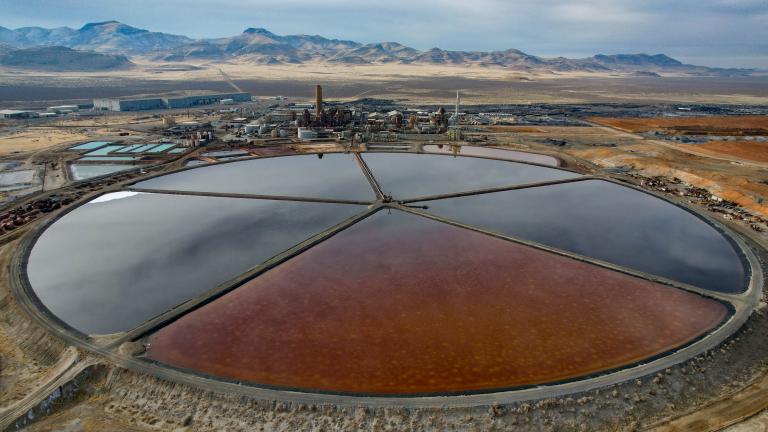
Dan HoltmeyerThese women don’t trust TransCanada’s assurances about safety.
TransCanada swears that once the Keystone XL pipeline is operational, it will be totally safe. The company is apparently so confident — despite already having had to dig up and replace faulty stretches of the pipeline’s southern leg — that it doesn’t see the need to invest in state-of-the-art spill-detection technology. TransCanada is like that obnoxious seventh-grade skateboarder too confident in his sick moves to bother with a helmet.
The internal spill detectors TransCanada currently uses — in which sensors alert remote operators if pressure along the pipeline drops — are standard for the industry, but they’re designed to catch high-volume spills. Bloomberg Businessweek reports:
Keystone XL would have to be spilling more than 12,000 barrels a day — or 1.5 percent of its 830,000 barrel capacity — before its currently planned internal spill-detection systems would trigger an alarm, according to the U.S. State Department, which is reviewing the proposal.
New external technology, on the other hand, can identify much smaller leaks. For example, acoustic sensors can pick up the sound of oil escaping through a pinhole-size opening. And helicopters doing flyovers can be fitted with trash-can-size devices that detect oil vapors in infrared sunlight, potentially spotting leaks flowing at rates of less than 10 barrels per day.
Bloomberg Businessweek calculated that it would cost about $705,000 — $5,000 per mile — to install advanced fiber-optic cable technology along 141 critical miles of the pipeline, areas where drinking water, ecosystems, and population centers are at risk. That’s hardly a drop in the bucket compared to the overall $5.3 billion cost of the pipeline. And investing in better spill-detection technology pays off:
Equipment available to spot spills more quickly would have cut 75 percent off the estimated $1.7 billion toll in property damage caused by major incidents on oil lines from 2001 to 2011, consultants said in a December report prepared for the [U.S. Transportation Department].
Though the U.S. EPA recommended these new external detection tools be used on Keystone XL, a TransCanada representative told Bloomberg that they haven’t yet been sufficiently tested on projects the scale of Keystone, and that they produce too many false positives to be reliable. But it’s not like the current system is doing a bang-up job, either:
Internal systems such as the one planned for Keystone XL have a spotty record catching leaks, according to the Transportation Department’s report, prepared by the engineering firm Kiefner & Associates Inc., of Worthington, Ohio. Members of the public reported 23 percent of the 197 oil and liquids pipeline leaks between January 2010 and July 2012, according to the study, compared to 17 percent identified by the pipeline companies.
TransCanada claims to be studying, at the EPA’s request, whether it could implement the new technologies along environmentally sensitive portions of the pipeline.
The company has had its share of safety issues — record numbers of leaks and a shutdown on the original Keystone pipeline, an explosion of a natural-gas pipeline, accusations that it cuts corners on construction. And a report by researchers at Cornell estimates that we could see 91 major spills over 50 years from Keystone XL. So maybe it couldn’t hurt for TransCanada to spring for some new and improved safety features this time around.




